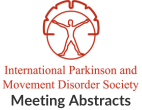Restless Leg Syndrome In Men: Examination Of Early Non-Motor Clinical Signs Of Parkinson’s Disease
Objective: Restless Legs Syndrome (RLS) is a disorder characterized by an abnormal sensation, some sort of dysesthesia, which cannot be described especially on the limbs.…Gustatory Connectivity in Parkinson’s Disease Progression
Objective: To analyze the consistency of neural connections of the primary gustatory cortex (PGC), ranging from control group to progressive stages of Parkinson’s Disease (PD).…Baseline hyposmia and RBD symptoms are associated with faster, but differential, cognitive decline at 2 years in the PPMI study
Objective: To explore the potential role of baseline hyposmia and RBD symptoms on progression of cognitive decline at 2 years. Background: Cognitive decline in PD…Relationship between RBD and olfactory disorder, clinical symptoms in Parkinson’s disease
Objective: We aimed to assess the association among RBD, olfactory function and clinical symptoms in patients with Parkinson's disease (PD). Background: Rapid eye movement sleep…Special features of parkinsonism with congenital anomalies of cerebral vessels
Objective: To study the features of the flow of parkinsonism with congenital anomalies of cerebral vessels. Background: Analysis of the study of neurological status, data…Olfactory dysfunction in Parkinson’s disease
Objective: It is to propose a psychophysical test of the olfactory function. Its originality is to use Moroccan odorous products belonging to our culture to…Evaluation of Clinical Peculiarities of Violations of Vertical Vision in Patients with Parkinson’s Disease
Objective: To study vertical oculomotor reflexes(VOR) and the state of the functional system "eyelid" in patients with Parkinson's disease. Background: Parkinson's disease (PD) is a common…A Prospective Study of the Effects of Deep Brain Stimulation on Constipation and Olfaction in Parkinson Disease
Objective: To investigate the effects of subthalamic nucleus deep brain stimulation (STN-DBS) on constipation and olfaction in patients with Parkinson disease (PD). Background: STN-DBS is…Structural connectivity changes in prodromal Parkinson’s disease patients: a multimodal MRI study
Objective: We hypothesised that changes in the brain structure and connectivity would be present at this stage. Background: There is wide consensus that prolonged prodromal…Decline in Neural Connectivity in Olfactory Spatial Attention: A Comparative Study in the Progression of Parkinson’s Disease
Objective: To study any inconsistency in the neural connections responsible for facilitating spatial recognition of olfactory stimuli as observed in people diagnosed with Parkinson’s Disease…
- « Previous Page
- 1
- …
- 5
- 6
- 7
- 8
- 9
- …
- 15
- Next Page »
